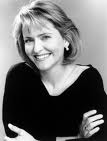|
Chamber
FRISSON DELIVERS SHIVERS OF DELIGHT
by Abby Wasserman
Sunday, March 30, 2025
Chamber
THE PARKER CAPTURES DEMANDING ADES QUARTET AT RAC SEBASTOPOL CONCERT
by Peter Lert
Saturday, February 15, 2025
Chamber
SPLENDID ECHOES ACROSS THE BAY
by Abby Wasserman
Sunday, February 9, 2025
ETHEREAL DUO IN WEILL HALL RECITAL
by Pamela Hicks Gailey
Thursday, February 6, 2025
ESPANA SEGURO AT SO CO PHIL'S JACKSON THEATER CONCERT
by Terry McNeill
Sunday, February 2, 2025
Choral and Vocal
MASTERFUL SINGING CLASS IN SCHROEDER HALL
by Pamela Hicks Gailey
Sunday, February 2, 2025
Recital
MUSICAL POT POURRI AT SPRING LAKE VILLAGE RECITAL
by Terry McNeill
Friday, January 31, 2025
CELLO AND CLARINET HIGHLIGHT TRIO NAVARRO'S CONCERT
by Ron Teplitz
Sunday, January 26, 2025
SONGS OF LOVE, IN A WARM TRIO
by Pamela Hicks Gailey
Sunday, January 26, 2025
Symphony
EARTHLY PLEASURES AT THE VALLEJO SYMPHONY
by Peter Lert
Sunday, January 19, 2025
|
 |
 Soprano Cyndia Siedan |
HOLIDAY MUSIC WITH A TWIST
by Steve Osborn
Saturday, December 4, 2010
Playing a requiem is a strange way to celebrate the holidays. At a time when people are looking for a bit of cheer, the Santa Rosa Symphony took the opposite approach for its Dec. 4 concert, offering not only the Fauré Requiem, but also the world premiere of Aubert Lemeland’s “Battle Pieces,” inspired by soldiers’ poems about death. Sandwiched between these two was the somewhat more festive Gloria by Francis Poulenc.
Regardless of the season, the Fauré Requiem was the highlight of the show. Using the full force of the Symphony’s 140-voice Honor Choir to telling effect, Music Director Bruno Ferrandis delivered a memorable performance. He achieved particularly good balance between the singers and the orchestra, and he was in full command of dynamics. The pianissimo passages were really, really quiet, and the fortissimos were correspondingly loud.
Mr. Ferrandis dedicated the performance of the Requiem to the composer Lemeland, who died just a few weeks ago. Perhaps that connection sparked the performance, which began with a dark and brooding entry from the choir. Mr. Ferrandis mouthed the words as they sang “Requiem aeternam dona eis Domine” (Grant them eternal rest, O Lord). He continued in this fashion throughout the piece, which he has carefully memorized and certainly mastered. The score calls for a solo soprano and baritone, along with an organ. Lacking a real pipe organ, Mr. Ferrandis made do with an electronic one, its speakers stacked incongruously behind the violins. The sound was a bit plinky on the high notes, but it was mostly adequate.
The soloists were adequate as well. Soprano Cyndia Sieden sang a beautiful “Pie Jesu,” but her voice was a bit angular and could have used some smoothing around the edges. Last-minute baritone substitute Hugh Davies had a more rounded tone and was effective in the lower part of his range. The upper part, however, was somewhat nasal and congested. The scheduled soloist, Marcus DeLoach, was sick and couldn’t perform.
Technical problems aside, the Faure solos were well sung and delicately balanced with the orchestra. The real vocal star, however, was the chorus. From their hushed entry in the “Introitus” to their angelic departure in the “In Paradisum,” they captured the spirit of the Requiem, one of the loveliest pieces in the repertoire.
In contrast, the Lemeland “Battle Pieces” that opened the show will probably never ascend into the repertoire. Lemeland was a prolific French composer, but he is hardly known in the United States, despite his obvious interest in America. “Battle Pieces” is based on five poems written by American soldiers during World War Two. Instead of being set to music, the poems are read one by one, each reading followed by a musical interpretation.
Compositions that use spoken rather than sung texts form a small subgenre in music, including such famous examples as Prokofiev’s “Peter and the Wolf” and Stravinsky’s “l’Histoire du Soldat.” The inherent danger is that the text will overwhelm the music, or vice versa. In this case, the text won by a landslide. The poems, read with conviction by former airman and actor Bernard Sugarman, were uniformly excellent, each one expressing the anguish and chagrin of soldiers headed into battle. The music, however, was undistinguished.
Lemeland scored the music for string orchestra and piano, with much emphasis on the cellos. Their lower reaches are often equated with grief, and Lemeland uses that trope repeatedly. Another standard device Lemeland employs is the quoting of hymns and folk tunes, in this case “The Battle Hymn of the Republic,” which makes an appearance in the opening section. The problem is that the music never rises above these devices. We already know from the poems that the music is supposed to be sad. It just never becomes anything else.
For some reason, several wind players were seated on stage during the “Battle Pieces,” even though they never played a note. They finally got their chance in the Poulenc Gloria, which features the composer’s usual sprightly writing for winds. The performance was a blessed relief from the dirge-like “Battle Pieces.” Once again, the choir shone, particularly in the “Laudamus Te” section and their a cappella entrance to “Qui Sedes.”
The Gloria is filled with unusual interpretations of a benumbingly standard text. Where legions of composers go one way in interpreting the words, Poulenc goes the other. The results are often memorable, nowhere more so than in the “Qui Sedes,” where the lush and exotic scoring gives the impression that the composer has found God while living it up on a tropical island.
If the performance of the Poulenc had a fault, it was with the lack of coherence. Poulenc introduces many musical ideas, and Mr. Ferrandis and company sometimes had trouble tying them all together. That particular ribbon and bow didn’t arrive until the Fauré.
In sum, the concert may not have been the most festive occasion, but it was mostly worth celebrating.
|
